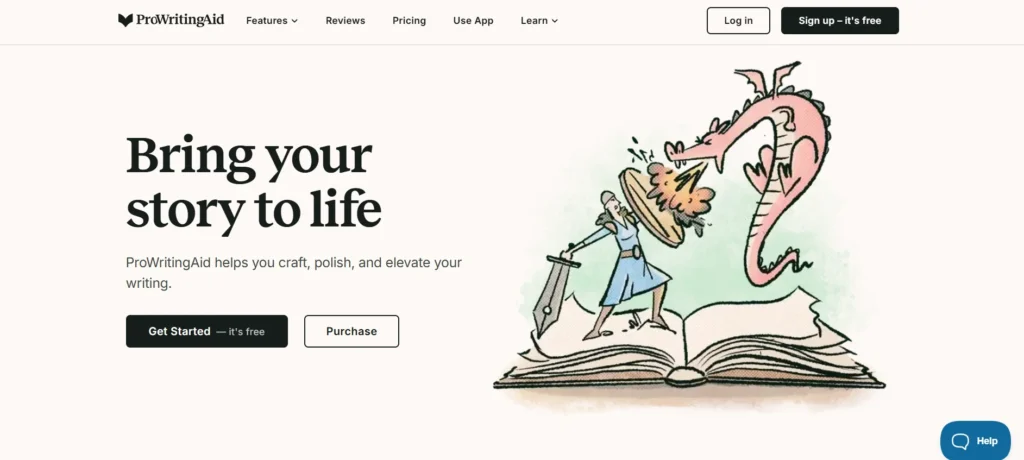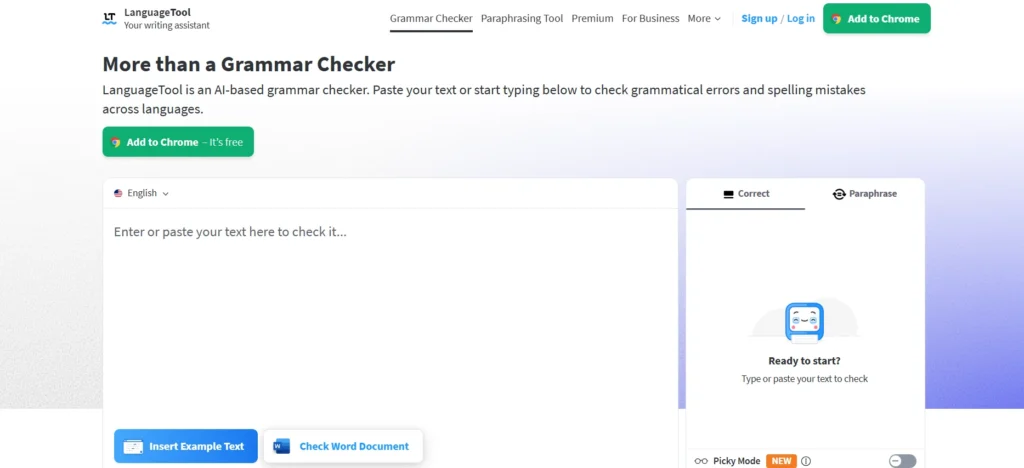Nothing kills great marketing copy faster than a typo. You can have the most brilliant idea, the perfect call-to-action, and an eye-catching design, but if your email says “Your invited!” instead of “You’re invited!”… your audience is already distracted. That’s why marketers (smart ones, anyway) are turning to grammar checkers. They’re not just spellcheck on steroids. They help you write clearly, stay on-brand, and keep your credibility intact. But with so many options out there, how do you pick the one that actually works for you? Let’s break it down.
Why Grammar Checkers Are a Marketing Lifesaver
In marketing, words aren’t just “words.” They’re sales pitches, brand promises, and relationship builders. Every sentence you publish either strengthens or weakens how people see your brand.
Here’s why grammar checkers belong in your toolkit:
- They save you time. You can spot and fix errors in seconds instead of hours.
- They keep you consistent. Whether it’s “eCommerce” or “e-commerce,” your brand voice stays the same across all channels.
- They protect your image. Clean, clear copy builds trust—sloppy writing does the opposite.
- They adapt to your audience. Many tools switch between U.S., U.K., Canadian, and Australian English, which is a lifesaver for international campaigns.
Bottom line? An online grammar checker isn’t just about avoiding embarrassment. They’re about writing faster, smarter, and more consistently.
What to Look for in a Grammar Checker
Choosing a grammar checker isn’t about grabbing the fanciest one with the most features. It’s about finding the one that fits how you work.
Here’s what to keep an eye on:
1. Smart, Context-Aware Suggestions
A good tool knows when you mean “there” versus “their.” An ai grammar checker doesn’t just follow rigid rules. It understands what you’re trying to say.
2. Tone and Style Adjustments
Marketing tone shifts depending on the platform. A LinkedIn post isn’t a TikTok caption. Look for tools that can help you edit tone on the fly.
3. Brand Style Guide Integration
If your brand always says “Sign up today” instead of “Register now,” a style guide feature will flag the wrong one before it goes live.
4. SEO and Readability Help
Some SEO tools double as mini SEO assistants, offering keyword tips and readability scores. Perfect if content marketing is your thing.
5. Language Support
Running campaigns in multiple countries? Make sure your grammar checker speaks your customers’ language.
6. Collaboration Features
Team marketing? Look for shared dashboards and style guides so everyone stays on the same page.
7. Easy Integration
Your grammar checker should work inside the tools you already use—Google Docs, WordPress, your email platform—without slowing you down.
Top Grammar Checkers for Marketers
Here’s a quick rundown of the big players and what they’re best at.
1. Grammarly

- Why marketers love it: Real-time suggestions, great tone analysis, and it works in most places you write online.
- Best for: Anyone who needs a reliable, all-around writing assistant.
- Heads-up: You’ll need the paid version for the best features.
2. ProWritingAid

- Why marketers love it: Deep, detailed writing feedback—great for long-form content.
- Best for: Content marketers and copywriters who want in-depth analysis.
- Heads-up: It can feel a bit much for short social posts.
3. Hemingway Editor

- Why marketers love it: It’s all about clarity and punchiness. Great for keeping things simple.
- Best for: Blog posts, landing pages, and anything where readability matters.
- Heads-up: It’s not a full grammar checker but more of a style tool.
4. LanguageTool

- Why marketers love it: Affordable, multilingual, and open-source.
- Best for: Marketers working in different languages or on a budget.
- Heads-up: Tone suggestions aren’t as advanced as Grammarly’s.
Match Your Grammar Checker to Your Workflow
Not all marketers work the same way, so your tool should fit you and your needs.
- Social media managers: You need speed and tone checks. Grammarly is a safe bet.
- Content marketing teams: Go for deep reports and SEO help. Try ProWritingAid.
- Solo freelancers: You want versatility without the price tag. Grammarly’s free version or LanguageTool works well.
- Multilingual campaigns: You need language accuracy. LanguageTool or DeepL Write are strong options.
Pro Tips for Using a Grammar Checker Like a Pro
- Customize it. Set tone, formality, and brand terms so you’re not getting irrelevant suggestions.
- Train your team. Make sure they know when to accept changes and when to trust their gut.
- Don’t rely on it 100%. Use it as a safety net, but still proofread for meaning and nuance. Don’t trust the tool blindly.
- Keep your style guide handy. If your tool supports one, load it up.
- Use it where you work. Extensions and plugins keep your process smooth.
Mistakes to Avoid
- Blindly accepting suggestions. AI can be wrong, and sometimes its “fix” changes your meaning.
- Forgetting about tone. Perfect grammar doesn’t matter if it sounds nothing like your brand.
- Skipping human review. Even the best tools miss subtle context or cultural nuances.
Think of It as Your Marketing Sidekick
A good grammar checker is like that reliable coworker who always catches the little things before they become big problems. It’s there to make sure your social post sounds fun instead of flat, that your blog reads smoothly instead of dragging, and that your email subject line hits just the right note. It’s not there to replace your creativity; it’s there to protect it. The fewer hours you spend fixing commas and rephrasing awkward sentences, the more energy you can put into brainstorming campaign ideas, connecting with your audience, and actually moving the marketing needle.
The Bottom Line
The best grammar checker isn’t the one with the most bells and whistles. It’s the one that makes your writing process smoother and your content sharper. If you’re a solo marketer, you might need something lightweight and quick. If you’re part of a big team, you probably want collaboration features and brand style enforcement.
Whatever you choose, remember: the goal isn’t just avoiding typos. It’s creating content that feels polished, on-brand, and easy to read so that your audience focuses on your message, not your mistakes.

